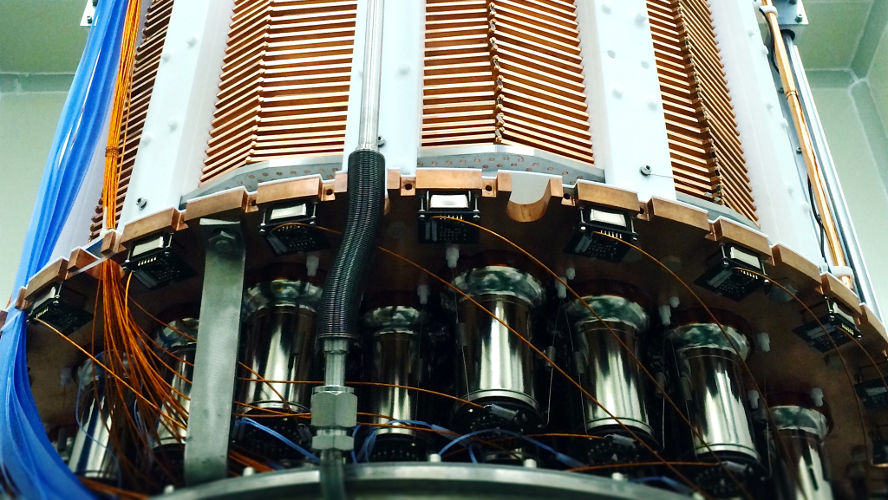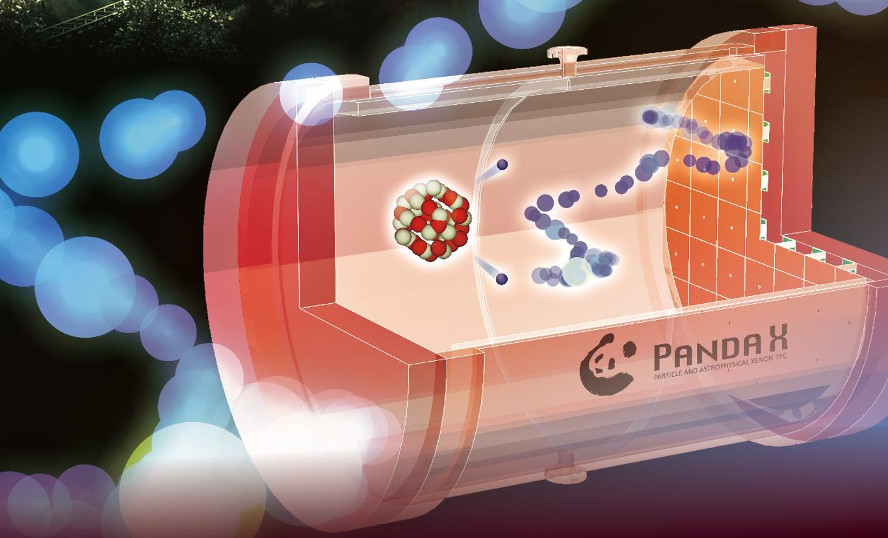PandaX: Particle and Astrophysical Xenon Experiments
PandaX is an experimental program which employs a series of xenon detectors to search for elusive dark matter particles and to study the fundamental properties of neutrinos. PandaX was founded in 2009 by Prof. Xiangdong Ji, who also served as the first spokesperson of the collaboration until 2018. Up to now, the collaboration has constructed and operated three generation of experiments, PandaX-I, PandaX-II, and PandaX-4T, with active target masses of 120 kg, 580 kg, and 3.7 tonne, respectively. The collaboration is also preparing for the next generation multi-ten-tonne experiment, PandaX-xT, aimed to be an ultimate dark matter direct detection experiment and a leading project to test the Majorana nature of the neutrinos.
PandaX-II is a dark matter direct detection experiment equipped with a half-ton scale dual-phase time projection chamber (TPC), operated in CJPL between Oct. 2014 and June 2019. In 2016 and 2017, PandaX-II produced the world leading constraints to dark matter-nucleon interactions.
With 6-ton of total Xenon and 4-ton sensitive target, PandaX-4T aims to improve the dark matter sensitivity by one order of magnitude in comparison to PandaX-II. PandaX-4T also plans to make sensitive searches on neutrinoless double beta decay of , and other signals from new physics. This project has been commissioned in 2021 and started data taking since then.
PandaX-III is a R&D effort to develop a high pressure gaseous Xenon TPC as a potential technology to search for the neutrinoless double beta decay of .
News
-
Tsung-Dao Lee Institute hosted an international Open Meeting for the PandaX-xT project from April 7-11, 2025.
-
PandaX-4T experiment has found indication of Coherent Elastic Neutrino-Nucleus Scattering (CE$\nu$NS) events induced by solar neutrinos.
-
PandaX-4T is not just a dark matter detector, as you may be more familiar with. For such a large and exquisite detector, we can explore multiple physics topics. Neutrino physics is one such important direction.
-
Background neutrinos can elastically scatter with target nucleus (coherently elastic neutrino-nucleus scattering or CEvNS), producing nuclear recoil signals in a dark matter detector that can mimic dark matter signals. This intrinsic background is the so-called “neutrino floor”, which will ultimately limit the sensitivity of dark matter direct detection. On the other hand, it also provides very interesting physics opportunities to study neutrino interactions.
-
With the extra energy gained from the cosmic rays, sub-GeV dark matter particles can produce visible recoil signals in the detector. We present a new result searching for the cosmic ray boosted dark matter (CRDM) with the PandaX-II full data. This work is motivated by the theoretical paper (PRL. 126 091804), which first pointed out that a sidereal diurnal modulation in signal rate and energy spectrum due to the Earth shielding is expected for low mass CRDM.
- 1 of 4
- next ›


